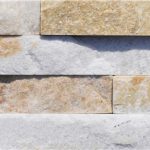Introduction
Cultured fieldstone is a popular choice for homeowners, landscapers, and builders looking to enhance the aesthetic appeal of their properties. This versatile material offers the timeless charm and rustic elegance of natural fieldstone, with added benefits such as affordability, consistency in size and shape, and ease of installation. In this comprehensive guide, we will explore the beauty and benefits of cultured fieldstone, its applications in landscaping and construction, as well as tips for selecting and installing this versatile material.
What is Cultured Fieldstone?
Cultured fieldstone, also known as manufactured or artificial fieldstone, is a man-made product designed to mimic the look and feel of natural fieldstone. It is typically made from a combination of cement, aggregates, and pigments that are molded and shaped to resemble the irregular shapes and textures of natural fieldstone. Cultured fieldstone is available in a wide range of colors, sizes, and styles, making it a versatile choice for various applications.
Beauty of Cultured Fieldstone
One of the primary reasons for the popularity of cultured fieldstone is its aesthetic appeal. Cultured fieldstone captures the natural beauty and rustic charm of real fieldstone, with its irregular shapes, textures, and earthy colors. Whether used for a rustic cottage-style facade, a cozy fireplace surround, or a charming garden wall, cultured fieldstone adds warmth and character to any space.
Benefits of Cultured Fieldstone
In addition to its visual appeal, cultured fieldstone offers several practical benefits that make it a desirable choice for homeowners and builders alike.
1. Affordability: Cultured fieldstone is typically more affordable than natural fieldstone, making it a cost-effective option for those looking to achieve the look of natural stone without breaking the bank.
2. Ledge stone for energy-efficient homes : Unlike natural fieldstone, which can vary significantly in size, shape, and color, cultured fieldstone offers a high degree of consistency. This uniformity makes it easier to plan and execute projects, ensuring a more polished and professional finish.
3. Ease of Installation: Cultured fieldstone is lightweight and easy to work with, making it a popular choice for DIY enthusiasts and professional contractors alike. Its modular design allows for quick and efficient installation, saving time and labor costs.
4. Durability: Cultured fieldstone is designed to withstand the elements and maintain its beauty over time. It is resistant to fading, cracking, and chipping, making it a durable and long-lasting choice for outdoor applications.
Applications of Cultured Fieldstone
Cultured fieldstone can be used in a variety of landscaping and construction projects, both indoors and outdoors. Some common applications include:
1. Facades: Cultured fieldstone can be used to create stunning facades for homes, businesses, and other structures. Whether used as a full exterior cladding or an accent feature, cultured fieldstone adds character and charm to any building.
2. Fireplaces: Cultured fieldstone is a popular choice for fireplace surrounds and mantels. Its natural texture and earthy colors create a cozy and inviting atmosphere, perfect for gathering around the fire on a chilly evening.
3. Retaining Walls: Cultured fieldstone is ideal for building retaining walls, garden borders, and edging. Its modular design allows for easy stacking and installation, creating a durable and attractive boundary for gardens and landscaping features.
4. Outdoor Living Spaces: Cultured fieldstone can be used to create outdoor kitchens, patios, and seating areas. Its natural look and feel blend seamlessly with the surrounding landscape, creating a harmonious and inviting outdoor living space.
Selecting Cultured Fieldstone
When selecting cultured fieldstone for your project, there are several factors to consider to ensure you choose the right product for your needs:
1. Style: Cultured fieldstone is available in a wide range of styles, from rugged and irregular to smooth and contemporary. Consider the overall aesthetic of your project and choose a style that complements your design vision.
2. Color: Cultured fieldstone comes in a variety of colors, ranging from earthy browns and grays to vibrant reds and blues. Choose a color that harmonizes with your existing decor and landscaping.
3. Size and Shape: Cultured fieldstone is available in various sizes and shapes, such as flats, corners, and ledgestones. Consider the scale of your project and choose stones that are proportionate to the space.
4. Texture: Cultured fieldstone can have a rough, textured surface or a smooth, honed finish. Consider the texture of the stone and how it will complement the surrounding materials and elements.
Installing Cultured Fieldstone
Installing cultured fieldstone is a straightforward process that can be completed by DIY enthusiasts or professional contractors. Here are some tips for a successful installation:
1. Prepare the Surface: Ensure that the surface where the cultured fieldstone will be installed is clean, level, and free of debris. Use a waterproof membrane or vapor barrier to protect the substrate from moisture.

2. Layout the Stones: Dry-fit the cultured fieldstones on the surface to determine the best arrangement and pattern. Make any necessary cuts or adjustments to ensure a tight fit and seamless finish.
3. Apply Adhesive: Use a high-quality construction adhesive or mortar to secure the cultured fieldstones to the surface. Apply the adhesive evenly to the back of each stone, then press firmly into place.
4. Grout the Joints: Once the stones are in place, fill the joints between them with grout or mortar. Use a grout bag or trowel to ensure even coverage and a clean finish.
5. Seal the Surface: To protect the cultured fieldstone from staining and weathering, consider applying a sealer or waterproofing agent. Follow the manufacturer's instructions for proper application and maintenance.
Conclusion
Cultured fieldstone is a versatile and attractive material that offers the beauty of natural stone with added benefits such as affordability, consistency, and ease of installation. Whether used for facades, fireplaces, retaining walls, or outdoor living spaces, cultured fieldstone adds warmth and character to any project. By selecting the right style, color, size, and texture, and following proper installation techniques, you can achieve a stunning and long-lasting finish with cultured fieldstone.
